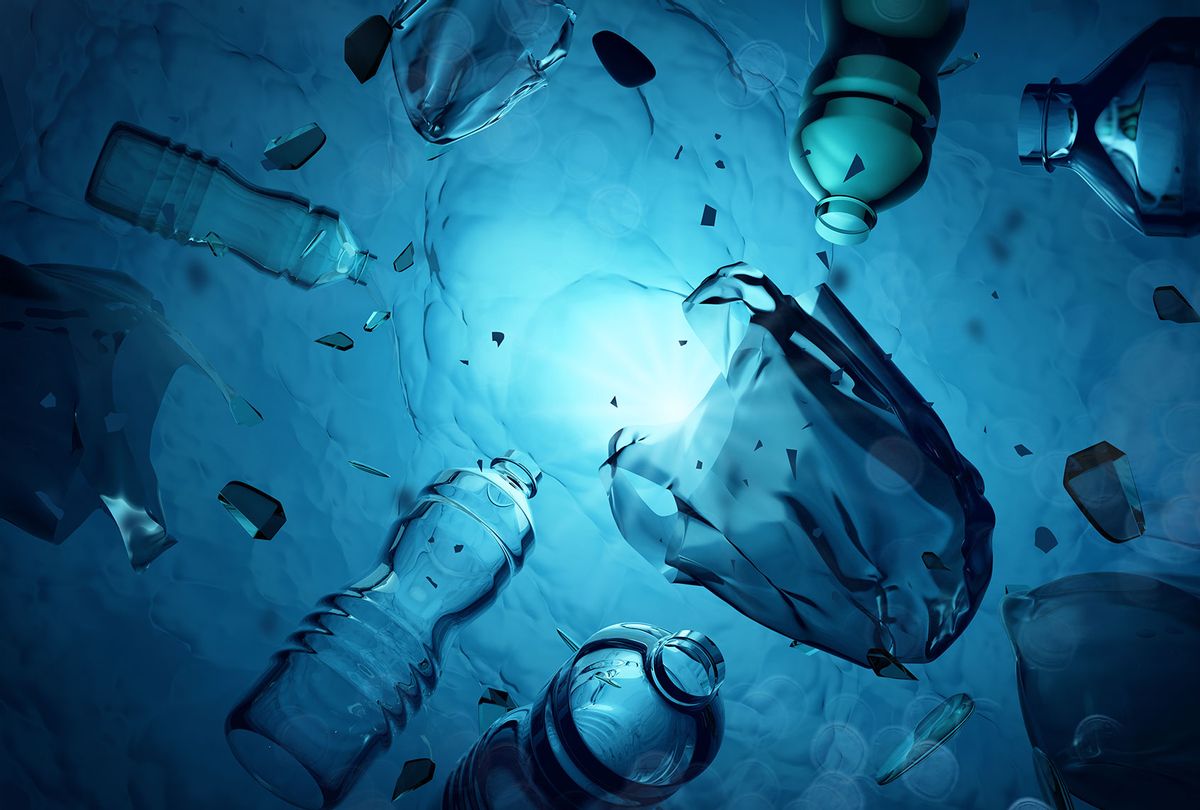A newly-discovered microbe that eats plastic in the cold is giving scientists hope

Currently, there is so much plastic junk in the ocean that a large garbage patch that is essentially an amorphous island twice as large as Texas that has been formed in the Pacific. When plastic isn’t clogging up our seas, it is creeping into our bodies: Microplastics, or particles five millimeters or less across or in length, have been found in human blood and breastmilk. The worst part is that, because plastic does not naturally degrade, all of these unwanted polymers are expected to linger forever.
Many of these newly-discovered microorganisms possess “the ability to break down biodegradable plastic films.”
Even so, scientists hope that one day there may be a simple process for permanently breaking down these plastics. Now, a new study in the scientific journal Frontiers in Microbiology offers a glimmer of hope — in the form, of all things, of microscopic organisms in Greenland, Norway and the Swiss Alps. This is more than a scientific curiosity, but a potential glimmer of positivity in an industrial saga that has up to this point been overwhelmingly bleak.
Scientists from the Swiss Federal Institute for Forest, Snow and Landscape Research WSL buried various types of plastic in Greenland, the icy Swiss Alps and the frigid Norwegian region of Svalbard. Then they left the plastic pieces alone for a year, periodically checking on them to observe the fungi and moss that had grown on them. Because these plastic bits were in colder climes, any microorganisms that managed to break down the plastics would break scientific precedent. Although microorganisms have occasionally been found to break down plastics, this has only ever worked at temperatures of 86 degrees Fahrenheit or higher. That means it requires a lot of heat — and therefore energy — to reproduce their process.
Yet the scientists found that certain microorganisms were able to break down plastics at temperatures as cold as 59 degrees Fahrenheit. As they explained, many of these newly-discovered microorganisms possess “the ability to break down biodegradable plastic films, dispersed PUR, and PBAT, providing a strong foundation to underline the role of biodegradable polymers in a circular plastic economy,” the report’s authors declare.
Want more health and science stories in your inbox? Subscribe to Salon’s weekly newsletter The Vulgar Scientist.
“Chemicals in plastic as well as pesticides, lead and other environmental exposures are linked to impaired reproduction including sperm count and quality.”
“The next big challenge will be to identify the plastic-degrading enzymes produced by the microbes and to optimize the process to obtain large amounts of enzymes,” co-author Beat Frey told CBS News. “In addition, further modification of the enzymes might be needed to optimize properties such as their stability.”
This is not to say that the discovery has limitless potential. Quite to the contrary, the only plastics that were broken down are those already designed to be theoretically biodegradable. That still counts as progress, as many of the ostensibly biodegradable plastics have proved to be anything but, yet it still means that a significant amount of plastic pollution will not be covered by this new method. Indeed, the microbes have not even been developed in a way that can utilized technologically.
There have been other hopeful scientific advances that suggest colder methods of breaking down plastics. Last year scientists published a study in the scientific journal Microbial Genetics found that a species of darkling beetle larvae known as Zophobas morio, “superworms” that look like elongated and slippery orange caterpillars, have bacterial enzymes in their guts that can break down certain types of polystyrene. The researchers discovered that “genera including Pseudomonas, Rhodococcus and Corynebacterium that possess genes associated with polystyrene degradation.”
“Our results support previous suggestions that superworms can help to reduce [polystyrene] waste,” the authors wrote. At the same time, the worms did not gain a lot of nutrients from their diet of polystyrene, with the authors writing that the “minimal weight gain” of the larvae would “hamper their use in the [polystyrene] recycling process” and make it difficult to use the worms’ natural abilities for biodiesel production, which could be done if the “superworms [were] raised on regular feed.”
Plastic pollution poses a threat to human beings because the chemicals in these plastics, most of which are unregulated, are unhealthy.
“Chemicals in plastic (phthalates, bisphenols and others) as well as pesticides, lead and other environmental exposures are linked to impaired reproduction including sperm count and quality,” Dr. Shanna Swan, a professor of environmental medicine and public health at Mount Sinai School of Medicine in New York City, told Salon last year. “Some, like phthalates and BPA, have a short half-life in the body (4-6 hours), so it is possible to reduce the body’s exposure if we can stop using products containing these.”
Read more
about plastic pollution

